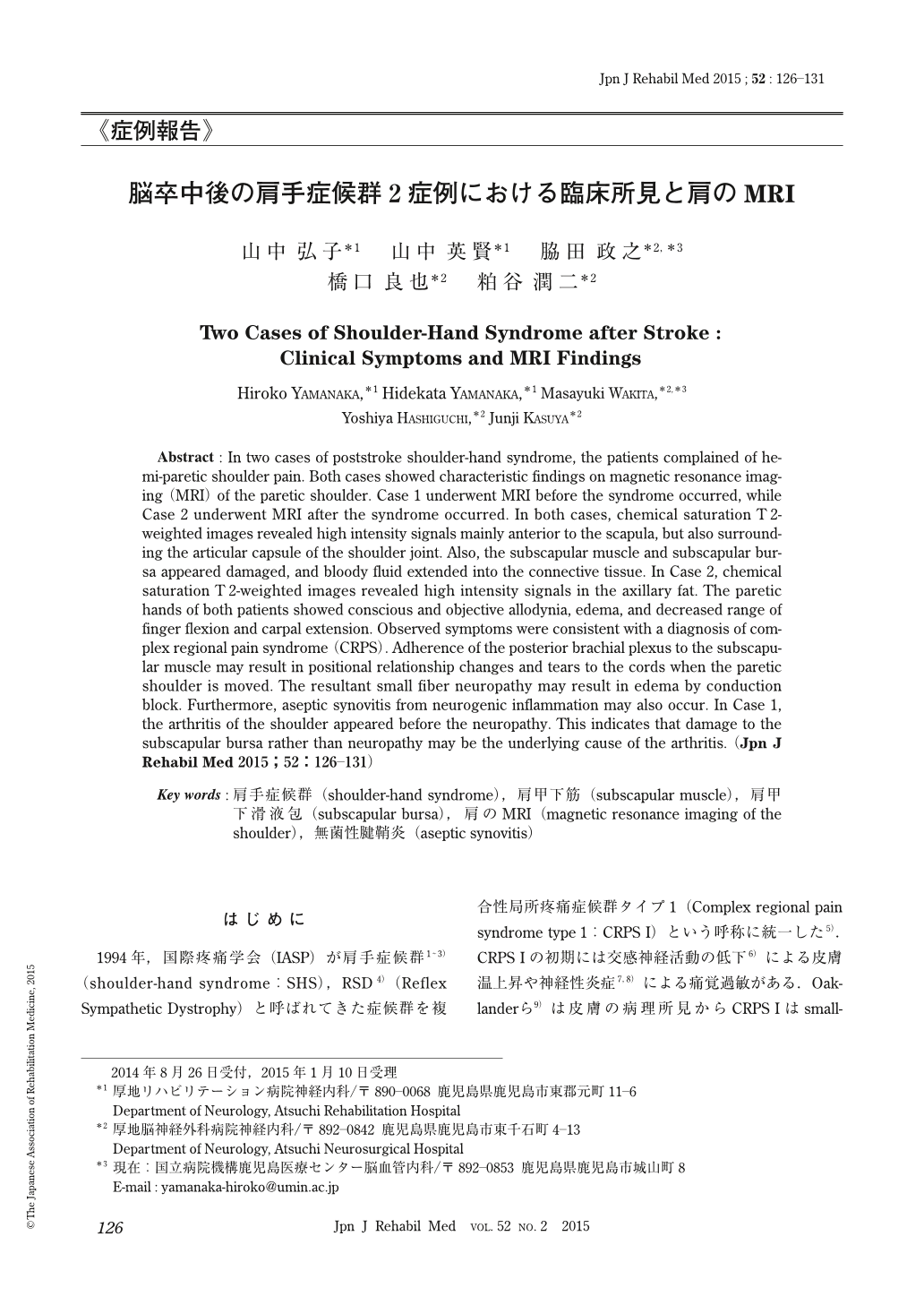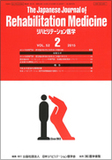Japanese
English
- 販売していません
- Abstract 文献概要
- 1ページ目 Look Inside
- 参考文献 Reference
はじめに
1994年,国際疼痛学会(IASP)が肩手症候群1〜3)(shoulder-hand syndrome:SHS),RSD4)(Reflex Sympathetic Dystrophy)と呼ばれてきた症候群を複合性局所疼痛症候群タイプ1(Complex regional pain syndrome type1:CRPS Ⅰ)という呼称に統一した5).CRPS Ⅰの初期には交感神経活動の低下6)による皮膚温上昇や神経性炎症7,8)による痛覚過敏がある.Oaklanderら9)は皮膚の病理所見からCRPS Ⅰはsmall-fiber neuropathyであるとしている.日本では厚生労働省CRPS研究班によって日本版CRPS判定指標10)が提唱された.脳卒中後のSHSは自覚的にも他覚的にも手の痛覚過敏,可動域制限,浮腫があり,肩の症状とは無関係に日本版CRPS判定基準を満たす.実際,脳卒中後のRSDは骨シンチにおいて約半数は肩関節に集積のないWrist-hand syndromeであった4).リハビリテーションの阻害因子であるSHSの病態生理の解明はその予防,早期発見,治療にとって重要である.肩の軽微な外傷が誘発因子2)として重視されているがその発症機序はまだ明らかでない.今回我々は,脳卒中亜急性期の肩のmagnetic resonance imaging(MRI)を施行し,SHS発症前の1例と発症後の1例にはあって,SHSを発症しなかった1例にはなかった特徴的な所見を認めたので報告する.
Abstract : In two cases of poststroke shoulder-hand syndrome, the patients complained of hemi-paretic shoulder pain. Both cases showed characteristic findings on magnetic resonance imaging (MRI) of the paretic shoulder. Case 1 underwent MRI before the syndrome occurred, while Case 2 underwent MRI after the syndrome occurred. In both cases, chemical saturation T2-weighted images revealed high intensity signals mainly anterior to the scapula, but also surrounding the articular capsule of the shoulder joint. Also, the subscapular muscle and subscapular bursa appeared damaged, and bloody fluid extended into the connective tissue. In Case 2, chemical saturation T2-weighted images revealed high intensity signals in the axillary fat. The paretic hands of both patients showed conscious and objective allodynia, edema, and decreased range of finger flexion and carpal extension. Observed symptoms were consistent with a diagnosis of complex regional pain syndrome (CRPS). Adherence of the posterior brachial plexus to the subscapular muscle may result in positional relationship changes and tears to the cords when the paretic shoulder is moved. The resultant small fiber neuropathy may result in edema by conduction block. Furthermore, aseptic synovitis from neurogenic inflammation may also occur. In Case 1, the arthritis of the shoulder appeared before the neuropathy. This indicates that damage to the subscapular bursa rather than neuropathy may be the underlying cause of the arthritis.

Copyright © 2015, The Japanese Association of Rehabilitation Medicine. All rights reserved.


